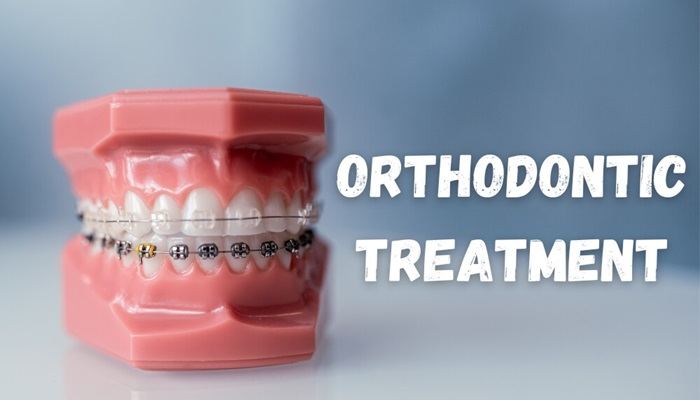Orthodontic treatment has evolved significantly over the years, moving beyond mere cosmetic enhancement to encompass comprehensive care that addresses functional and aesthetic concerns. Comprehensive orthodontic treatment aims to achieve not just straight teeth but also correct jaw alignment, proper occlusion (bite), and overall oral health. This article explores what comprehensive orthodontic treatment entails, its benefits, the various treatment options available, and the importance of seeking care from qualified professionals.
What Is Comprehensive Orthodontic Treatment?
Comprehensive orthodontic treatment involves the diagnosis, prevention, interception, and correction of malocclusions (misalignments of the teeth and jaws). It encompasses a detailed assessment of the patient’s dental and facial structures to develop a customized treatment plan. Unlike simple cosmetic alignment, comprehensive treatment addresses underlying issues that may affect long-term oral health and function.
SEE ALSO: 5 Countries with The Best Orthodontic Treatment
Key Components of Comprehensive Treatment:
Initial Assessment and Diagnosis: The orthodontist conducts a thorough examination, which may include X-rays, photographs, and digital scans, to assess the teeth, jaws, and facial structure. This helps in diagnosing issues such as overcrowding, overbites, underbites, crossbites, and other alignment problems.
Treatment Planning: Based on the assessment, a personalized treatment plan is developed. This plan outlines the specific orthodontic appliances or techniques that will be used, the expected duration of treatment, and the anticipated results.
Orthodontic Appliances: Comprehensive treatment may involve a variety of appliances, including traditional braces, clear aligners (such as Invisalign), retainers, expanders, and other specialized devices. The choice of appliance depends on the patient’s age, the severity of the malocclusion, and their personal preferences.
Periodic Adjustments: Throughout the treatment process, regular appointments are scheduled to monitor progress and make necessary adjustments to the appliances. This ensures that the teeth and jaws are gradually guided into their correct positions.
Retention Phase: Once the active treatment phase is complete, a retention phase begins. Retainers are used to maintain the newly achieved alignment of the teeth and prevent them from shifting back to their original positions.
Benefits of Comprehensive Orthodontic Treatment
Comprehensive orthodontic treatment offers numerous benefits beyond just aesthetic improvement:
Improved Oral Health: Properly aligned teeth are easier to clean, reducing the risk of tooth decay, gum disease, and other oral health problems.
Enhanced Facial Aesthetics: Correcting malocclusions can improve facial symmetry and harmony, enhancing the overall appearance.
Optimized Bite Function: Proper alignment of the teeth and jaws improves bite function, reducing strain on the jaw joints and muscles.
Long-Term Stability: Comprehensive treatment aims for stable, long-lasting results, minimizing the likelihood of relapse.
Types of Orthodontic Appliances Used in Comprehensive Treatment
Orthodontic appliances have advanced significantly, offering patients more choices based on their needs and preferences:
Traditional Braces: These consist of metal or ceramic brackets bonded to the teeth, connected by wires that are periodically adjusted to gradually move the teeth into alignment.
Clear Aligners: Clear aligner systems, like Invisalign, use a series of custom-made, removable trays to gradually move the teeth. They are nearly invisible and offer greater convenience compared to traditional braces.
Lingual Braces: Placed on the inner surface of the teeth, lingual braces are hidden from view but can effectively correct alignment issues.
Functional Appliances: These are used to modify the growth of the jaws, particularly in younger patients, to correct skeletal discrepancies and improve facial balance.
Retainers: After active treatment, retainers are worn to maintain the teeth in their new positions.
The Importance of Choosing a Qualified Orthodontist
Choosing a qualified orthodontist is crucial for ensuring the success and safety of comprehensive orthodontic treatment.
Orthodontists are specialists who have completed additional training beyond dental school, focusing specifically on the diagnosis, prevention, and treatment of dental and facial irregularities. They have the expertise to create customized treatment plans and monitor progress throughout the treatment process.
Factors to Consider When Choosing An Orthodontist:
Credentials and Experience: Look for an orthodontist who is board-certified and has experience treating a variety of cases.
Technology and Techniques: Inquire about the orthodontist’s use of advanced technology and modern treatment techniques.
Patient Reviews and Testimonials: Read reviews from other patients to gauge their satisfaction and the quality of care provided.
Comfort and Communication: Choose an orthodontist with whom you feel comfortable discussing your concerns and treatment goals.
Conclusion
Comprehensive orthodontic treatment goes beyond simply straightening teeth; it aims to optimize oral health, improve facial aesthetics, and enhance overall quality of life. By addressing both functional and aesthetic concerns, orthodontists can achieve stable, long-lasting results that benefit patients of all ages. If you or your loved one are considering orthodontic treatment, consult with a qualified orthodontist to explore your options and embark on a journey towards a healthier, more confident smile.

